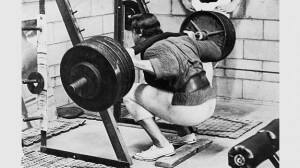What are weight lifting shoes?
If you’re pondering over what exactly weightlifting shoes are you’re probably not alone. Weight lifting shoes are fairly new to modern mainstream fitness, and it’s the increased presence of saftey and the increasing popularity of Olympic weight lifting that are bringing these shoes into local gyms. Weight lifting shoes are now being seen more than ever before.
Weight lifting shoes are footwear specifically designed to improve your weightlifting performance, typically for movements such as squats and Olympic weight lifting movements such as clean and jerks, and snatches.
Just like you wear suitable shoes when you go jogging to protect your knees and improve your running style, weight lifting do exactly the same when it comes to weight lifting.
Why do they have a raised heel?
As you can see, Schwarzenegger used to place a block of wood under his heels to give him greater squat depth and keep his torso more upright. One of the problems of putting a block under your foot though, is that unnecessary stress is now on the arch of the foot, which has no support at all.
There are many reasons why there is a raised heel in weight lifting shoes. Primarily, a slightly raised heel improves form and posture. With a raised heel, you can achieve a greater (and safer) squat depth. They lessen the importance of ankle and calve mobility. You take the stress off the knees and more into the hips by being able to keep your torso more upright.
Secondly, a sturdy heel doesn’t compress. Often you’ll see people squatting in regular shoes, trainers, and even old running shoes. These compress as you squat and often result in the ankle rotating to which ever side gives way first and it’s often harder to keep your heels on the floor. This causes instability and injury.
Why do some have a large strap?
The strap helps keep your foot firmly in place, avoiding any excess movement of slipping which occurs in looser footwear. The whole idea is to make sure as little energy as possible is lost, and that the hard sole ensures all pushing power is transferred.
What else?
Weight lifting shoes also provide an immense amount of ankle support to prevent buckling under large weight, again, this helps prevent injury and more importantly, allows for maximum energy transfer (and more weight shifted).


It’d be interesting to review one of the lesser known, but cheaper Olympic weightlifting shoes with wooden heels. Such choices include the Risto Olimpico @ $182, or some of the Ma Strength shoes $110.
I am really interested if the wooden heel trumps some of the “slicker” modern shoes such as the Adidas Adipowers/Leistung or the Nike Romaleos. John Broz seems to think it does, as it’s apparent in his review of the Asics 727 Tiger. But those suckers are so expensive! They retail @ $319!!!
Let me know what you think.